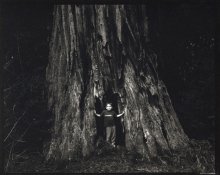I'm noticing in most of my searches that x-ray film comes in a variety of flavors. Blue-sensitive, green-sensitive (which may be orthochromatic or green-only), high speed, medium speed, half-speed, screen. Does anybody have suggestions about exactly which to purchase? Generally, which films produce fine grain, moderate speed (anything above single digits), and good sharpness?
I'm also wondering if anybody has noticed any differences in quality due to the dual coating on the film. Any loss of sharpness, problems due to lack of anti-halation layer, etc?
How is the grain? Some of the examples posted seem to have very, very fine grain, but some posters in other threads complain to no end about the grain being huge. Any truth in either direction? If it depends on the film, which films are which?
I think that pictoral use of x-ray film could become a big thing, especially considering the cost. We need to get some solid information going here!











 .
.